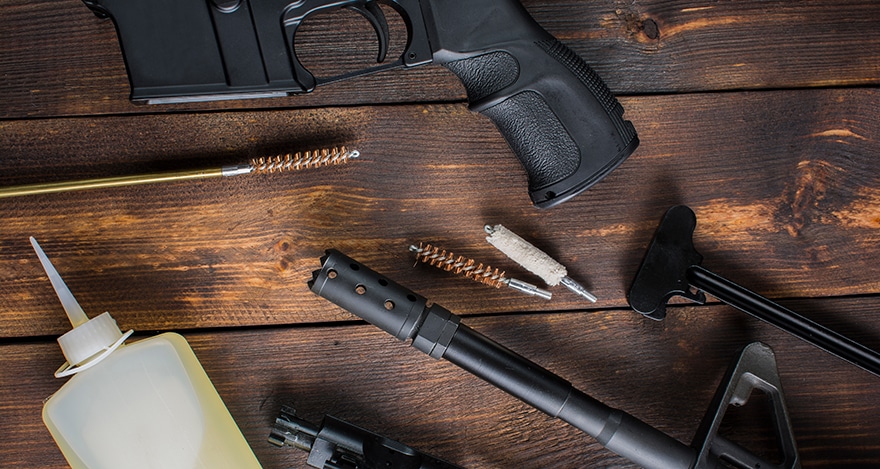How Long Does an AR-15 Last, and What You Can Do to Extend It
A common question shooters thinking about buying their first AR-15 ask is, “What is the lifespan of an AR-15?”. The AR-15, a popular and versatile rifle, has garnered immense popularity for its reliability and modularity. However, like any mechanical device, it has a finite lifespan affected by various factors. In this blog post, I will provide insights into the factors that influence the lifespan of an AR-15, how to prolong its longevity, and signs that indicate it may need your attention.
Table of contents
Understanding the AR-15 Platform

Before we delve into the lifespan of the AR-15, let’s take a moment to understand the basics of this iconic rifle. The AR-15, short for Armalite Rifle 15, is a semi-automatic rifle that originated in the 1950s and became popular among civilians for its adaptability and customization options. Depending on the variant, it operates on a direct impingement or gas piston system. The AR-15 platform is known for its lightweight construction, ergonomic design, and ease of disassembly and maintenance.
Factors Affecting the Lifespan of an AR-15
The lifespan of an AR-15 can be influenced by several factors, including build quality, usage, maintenance, and the ammunition used. Let’s explore each of these factors in detail.

Build Quality
- The build quality of an AR-15 significantly determines its overall lifespan. AR-15s manufactured by reputable companies using high-quality materials and precise machining techniques tend to have longer lifespans.
- Lower quality or poorly assembled AR-15s may experience premature wear or malfunction, impacting longevity.
Usage
- The frequency and intensity of use directly affect an AR-15’s lifespan. Regular, responsible shooting within recommended parameters can prolong the rifle’s life.
- On the other hand, excessive rapid-fire, extended shooting sessions without proper cooling periods, or using the rifle beyond its intended purposes can accelerate wear and tear.
Maintenance
- Regular maintenance is vital for extending the lifespan of an AR-15. Proper cleaning, lubrication, and inspection of critical components help prevent premature wear and ensure reliable performance.
- Neglecting maintenance or using improper cleaning techniques can accumulate debris, fouling, and corrosion, all of which can compromise the rifle’s performance and longevity.
Ammunition Quality
- The quality and type of ammunition used in an AR-15 can impact its lifespan. High-quality, factory-made ammunition with proper specifications is less likely to cause excessive stress on the rifle’s components.
- Using low-quality, reloaded, or overpowered ammunition may increase wear on the rifle’s internal parts and potentially cause damage.
Signs of Wear and When to Replace Parts

Despite proper care, all firearms will eventually show signs of wear over time. Recognizing these signs early can help prevent catastrophic failures and extend the overall lifespan of the AR-15. Here are some common signs of wear and when to consider replacing certain parts:
Excessive Recoil and Felt Recoil
As an AR-15 experiences wear, you may notice increased or a difference in felt recoil. This could indicate worn buffer springs, recoil springs, or other internal components.
Firing Pin Indentations
If the firing pin indentations on spent casings become shallow or inconsistent, it may be time to replace the firing pin or the entire bolt carrier group.
Malfunctions and Failures
Frequent malfunctions such as failure to extract, eject, or feed can indicate worn or damaged components that require replacement.
Loose or Wobbly Components
Loose or wobbly components, especially in the upper or lower receiver, can reduce accuracy and potentially dangerous conditions. Tighten or replace any loose parts promptly.
Extending the Lifespan of Your AR-15
Thankfully, there are several proactive steps you can take to extend the lifespan of your AR-15, ensuring its reliable performance for years to come.

Regular Cleaning and Lubrication
Clean your AR-15 thoroughly after each shooting session to remove carbon buildup, fouling, and debris. Properly lubricate moving parts to reduce friction and prevent excessive wear.
Responsible Shooting Practices
Avoid prolonged rapid-fire sessions that can overheat the barrel and components. Take regular breaks during shooting to allow the rifle to cool down.
Use Quality Ammunition
Stick to factory-made, high-quality ammunition that meets the rifle’s recommended specifications. Avoid using reloaded or untested hand loads, as they may cause damage.
Replace Components as Needed
Regularly inspect your AR-15 for signs of wear and promptly replace worn or damaged components to prevent further issues.
What is the lifespan of an AR-15? Conclusion
The lifespan of an AR-15 depends on various factors, including build quality, usage, maintenance, and ammunition used. With proper care, responsible shooting practices, and regular maintenance, you can significantly extend the life of your AR-15. Regularly inspecting and replacing worn components will ensure your rifle remains safe, reliable, and accurate for many years.
In regards to pinpointing an actual number, although there isn’t one, I have an AR-15 that is over 30 years old and still functions excellently. I have replaced parts over time, but it is still a very reliable rifle. You can expect to change parts, but with proper maintenance and care, it is safe to say that the rifle could last your lifetime.
What is the lifespan of an AR-15? FAQ
Yes, with proper care and maintenance, an AR-15 can last for a considerable amount of time. However, like all mechanical devices, it will eventually experience wear and may require part replacements to maintain optimal performance.
After each shooting session, it’s essential to clean and lubricate your AR-15. This helps prevent carbon buildup, fouling, and corrosion, ensuring reliable performance and prolonging the lifespan of the rifle.
Signs that your AR-15 may need replacement parts include excessive recoil, inconsistent firing pin indentations, frequent malfunctions, and loose or wobbly components. Regular inspections will help identify any wear or damage that requires attention.



